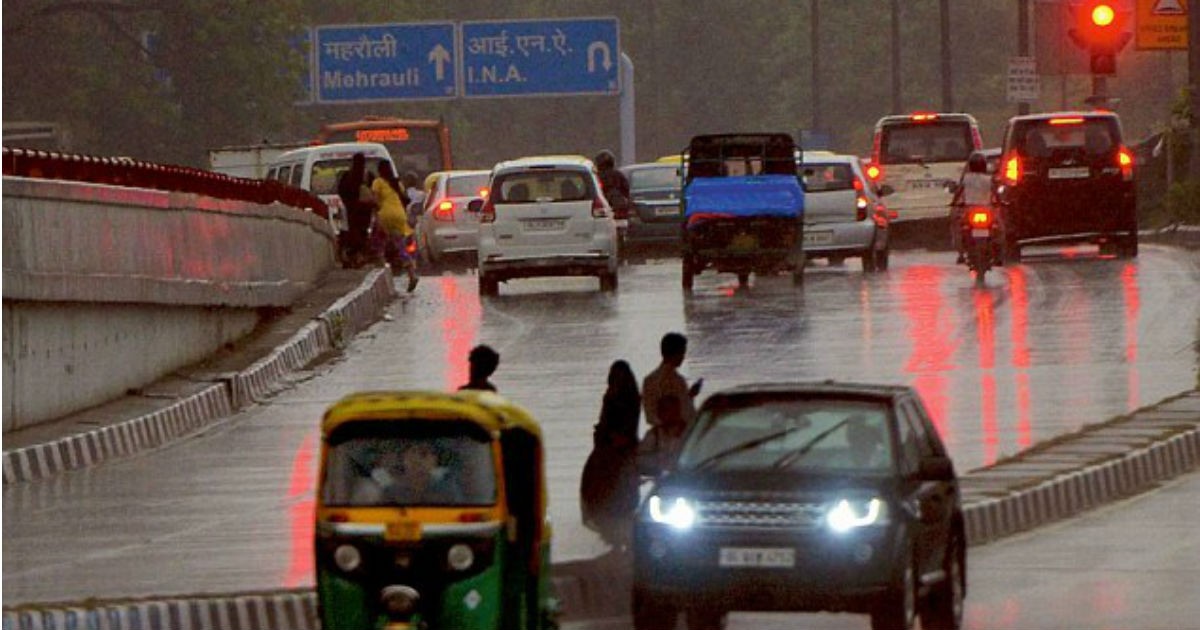Gujarat Floods: Climate change impacts worsen, weather models fail
Weather models fail to predict heavy rains in South Gujarat. Experts stress the urgency of strengthening forecasting and modelling capabilities to address micro-scale weather events accurately.
By Editorial Team / Jul 21, 2023

Heavy to extremely heavy rains triggered flash floods in several cities in South Gujarat
Monsoon mayhem continues to wreak havoc across different parts of India. After battering Himachal Pradesh and Uttarakhand last week, extreme weather events have now hit South Gujarat. Weather models have failed to predict climate change led extreme rain events, leading to chaotic and sudden situations, leaving little time for preparation.
Heavy to extremely heavy rains triggered flash floods in several cities earlier this week. Veraval, the coastal town in Saurashtra-Gujarat, recorded 520 mm of rainfall between 8.30 am on July 18 to 8.30 am on July 19 2023, the highest in the last 63 years. With this, it broke the all-time high 24-hour rainfall record, dated July 3, 1960, with 301.6 mm of rainfall.
Torrential downpours continued Wednesday as Valsad recorded a whopping 122mm, Surat 145 mm, Bhavnagar 99 mm, and Ahmedabad 65 mm. The situation remains grim as meteorologists predict more heavy Monsoon showers for another 24 hours.
According to data released by the state government, 43 reservoirs have been put on high alert, while 18 are on alert mode and 19 are on warning. Gujarat, in total, has 206 reservoirs.
The ongoing vigorous Monsoon conditions could be attributed to a cyclonic circulation marked over the Gulf of Kutch and adjoining Saurashtra, and an offshore trough remains off the coastal Gujarat and Konkan region.
While such heavy to very heavy rains are common along the coastal areas of Gujarat during the Monsoon, such an increase in the rain figures is something to think about. Climate change led to rising temperatures at the surface and sea, which have increased the moisture incursion manifold. With this, the chances of extreme rain incidences, like the one recorded in Veraval, rise tremendously. We witnessed a similar situation in northern states last week.
Strong modelling capability is the only way out
Experts have once again stressed the need to strengthen our forecasting and modelling competence, as clearly, such a micro-scale weather event remains beyond the capability of weather models to predict in real-time. Computers are not powerful enough to accurately predict the severity of these extremes.
According to NOAA (National Oceanic and Atmospheric Administration), global climate models have their own challenges in simulating the impact of greenhouse gases on extreme weather events. For starters, global models were designed to predict how average climate conditions over large areas would respond to average global increases in carbon dioxide.
Most of these global models need to do a better job of simulating small-scale, individual extreme weather events. Those limitations mean that scientists must usually turn to high-resolution models for extreme event attribution studies to better capture local extremes. These high-resolution models introduce challenges of their own.
To improve evidence-based adaptation, improved climate models and downscaling strategies capable of capturing changes in extreme events are essential. Climate models tend to have considerable difficulty in simulating the observed pattern because of extremes in topography. For instance, multi-model evaluation of global change shows there is an increase in precipitation over the south and southeastern Asian region during the summer season, but over the Himalayas fewer models are in agreement.
According to the latest report, ‘India's Climate Research Agenda 2030 and Beyond’, Intergovernmental Panel on Climate Change (IPCC) Assessment Reports highlight that anthropogenic warming affects each component of the earth’s system based on the simulations of Global climate models (GCMs). However, studies have reported that GCMs cannot accurately reproduce India's typical monsoon climate because of their limitation in simulating many aspects of monsoon dynamics. Hence, there is a need for regional customization of GCM, a high-resolution Regional Earth System Model (RESM). There is an urgent need to enhance the high-resolution model development and data assimilation techniques, modelling ecosystems and higher trophic levels, and observations. In fact, improved regional modelling approaches are the way to develop early warning systems, and bring scientific understanding to policymakers for preparing resilience and adaptive measures.
Extreme rainfall

